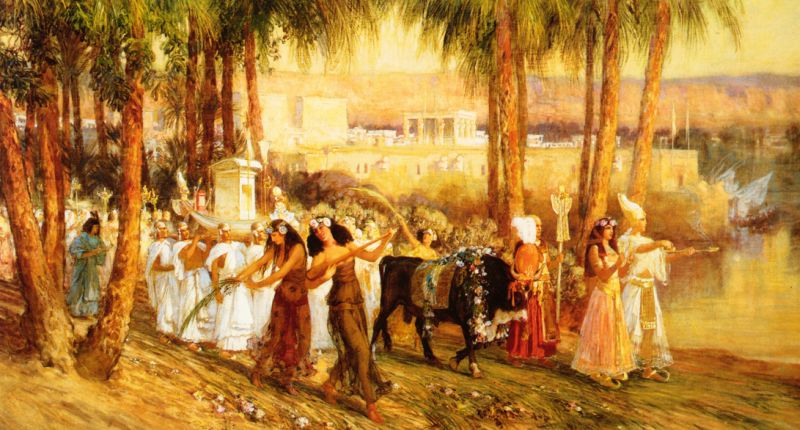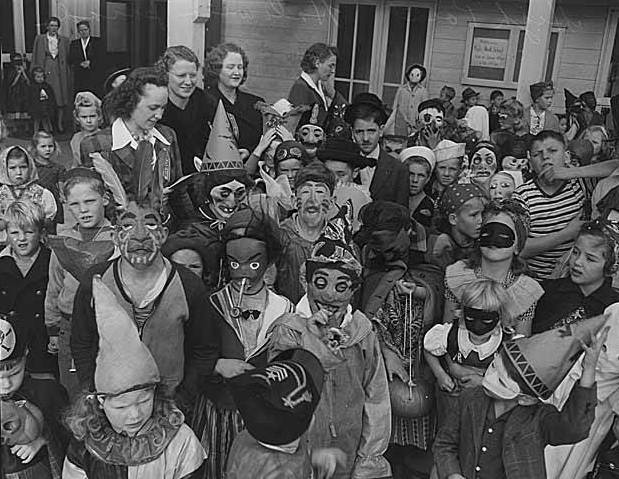|
Eid Il-Burbara
Eid il-Burbara or Saint Barbara's Day ( ar, عيد البربارة), and also called the Feast of Saint Barbara, is a holiday annually celebrated on 17 December (Gregorian calendar) or 4 December (Julian calendar) amongst Middle Eastern Christians in Lebanon, Syria, Jordan, Palestine, and Turkey (Hatay Province). It is also celebrated as Barbaroba (ბარბარობა) amongst Christians in Georgia. Its celebration shares many elements with Hallowe'en, though coming from a much earlier tradition, and unrelated to the feast of the dead. Traditionally, adults and children wearing disguise go around houses in the villages dancing and singing the story of Saint Barbara; and in each house, they are offered food (and sometimes money) specially prepared for that feast. It is celebrated in honour of the Christian Saint and Martyr Saint Barbara. The general belief amongst Lebanese Christians is that Saint Barbara disguised herself as many different characters to elude the Romans ... [...More Info...] [...Related Items...] OR: [Wikipedia] [Google] [Baidu] |
Koliva
Koliva, also spelled, depending on the language, kollyva, kollyba or colivă, is a dish based on boiled wheat that is used liturgically in the Eastern Orthodox Church for commemorations of the dead. In the Eastern Orthodox Church, koliva is blessed during funerals, as well as during the memorial service (''mnemosyno'') that is performed at various intervals after a person's death and on special occasions, such as the Saturday of Souls (ψυχοσάββατο). It may also be used on the first Friday of Great Lent, at Slavas, or at ''mnemosyna'' in the Christmas meal. In some countries, though not in Greece, it is consumed on nonreligious occasions as well. A similar food item is widely popular in Lebanon where it is known as ''snuniye'' and, more commonly, as ''berbara'' as it is prepared for Saint Barbara's feast day, December 4, which is celebrated with Halloween-like festivities. Etymology ''Kollyba'', a word which in Greek is the plural form of ''kollybo'' (: n neu; its ... [...More Info...] [...Related Items...] OR: [Wikipedia] [Google] [Baidu] |
Holiday
A holiday is a day set aside by custom or by law on which normal activities, especially business or work including school, are suspended or reduced. Generally, holidays are intended to allow individuals to celebrate or commemorate an event or tradition of cultural or religious significance. Holidays may be designated by governments, religious institutions, or other groups or organizations. The degree to which normal activities are reduced by a holiday may depend on local laws, customs, the type of job held or personal choices. The concept of holidays often originated in connection with religious observances or associated with traditions. The intention of a holiday was typically to allow individuals to tend to religious duties associated with important dates on the calendar. In most modern societies, however, holidays serve as much of a recreational functions as any other weekend days or activities. In many societies, there are important distinctions between holidays designate ... [...More Info...] [...Related Items...] OR: [Wikipedia] [Google] [Baidu] |
Anise
Anise (; '), also called aniseed or rarely anix is a flowering plant in the family Apiaceae native to Eurasia. The flavor and aroma of its seeds have similarities with some other spices and herbs, such as star anise, fennel, licorice, and tarragon. It is widely cultivated and used to flavor food, candy, and alcoholic drinks, especially around the Mediterranean. Description Anise is an herbaceous annual plant growing to or more. The leaves at the base of the plant are simple, long and shallowly lobed, while leaves higher on the stems are feathery pinnate, divided into numerous small leaflets. The flowers are either white or yellow, approximately in diameter, produced in dense umbels. The fruit is an oblong dry schizocarp, long, usually called "aniseed".Anise (''Pimpinella anisum'' L.) from Gernot K ... [...More Info...] [...Related Items...] OR: [Wikipedia] [Google] [Baidu] |
Festivals In The State Of Palestine
A festival is an event ordinarily celebrated by a community and centering on some characteristic aspect or aspects of that community and its religion or cultures. It is often marked as a local or national holiday, mela, or eid. A festival constitutes typical cases of glocalization, as well as the high culture-low culture interrelationship. Next to religion and folklore, a significant origin is agricultural. Food is such a vital resource that many festivals are associated with harvest time. Religious commemoration and thanksgiving for good harvests are blended in events that take place in autumn, such as Halloween in the northern hemisphere and Easter in the southern. Festivals often serve to fulfill specific communal purposes, especially in regard to commemoration or thanking to the gods, goddesses or saints: they are called patronal festivals. They may also provide entertainment, which was particularly important to local communities before the advent of mass-produced ... [...More Info...] [...Related Items...] OR: [Wikipedia] [Google] [Baidu] |
December Observances
December is the twelfth and final month of the year in the Julian and Gregorian calendars and is also the last of seven months to have a length of 31 days. December got its name from the Latin word ''decem'' (meaning ten) because it was originally the tenth month of the year in the calendar of Romulus which began in March. The winter days following December were not included as part of any month. Later, the months of January and February were created out of the monthless period and added to the beginning of the calendar, but December retained its name.Macrobius, ''Saturnalia'', tr. Percival Vaughan Davies (New York: Columbia University Press, 1969), book I, chapters 12–13, pp. 89–95. In Ancient Rome, as one of the four Agonalia, this day in honour of Sol Indiges was held on December 11, as was Septimontium. Dies natalis (birthday) was held at the temple of Tellus on December 13, Consualia was held on December 15, Saturnalia was held December 17–23, Opiconsivia w ... [...More Info...] [...Related Items...] OR: [Wikipedia] [Google] [Baidu] |
Festivals In Lebanon
The following is an incomplete list of festivals in Asia, with links to separate lists by country and region where applicable. This list includes festivals of diverse types, including regional festivals, commerce festivals, film festivals, folk festivals, carnivals, recurring festivals on holidays, and music festivals. Music festivals are annotated "(music)" for countries where there is not a dedicated music section. This list has overlap with List of film festivals in Asia. Sovereign states Afghanistan * Nowruz in Afghanistan *Baloch-Pakhtun Unity Day Armenia * Dolma Festival in Armenia (cultural heritage, gastronomy) * Golden Apricot Yerevan International Film Festival (film) * MetalFront Fest (music) * Pan-Armenian Games (sports) * ReAnimania International Animation Film & Comics Art Festival of Yerevan * Yerevan International Film Festival (film) Azerbaijan * Baku International Film Festival East-West (film) *Baku International Tourism Film Festival (film) *C ... [...More Info...] [...Related Items...] OR: [Wikipedia] [Google] [Baidu] |
Festivals In Syria
A festival is an event ordinarily celebrated by a community and centering on some characteristic aspect or aspects of that community and its religion or cultures. It is often marked as a local or national holiday, mela, or eid. A festival constitutes typical cases of glocalization, as well as the high culture-low culture interrelationship. Next to religion and folklore, a significant origin is agricultural. Food is such a vital resource that many festivals are associated with harvest time. Religious commemoration and thanksgiving for good harvests are blended in events that take place in autumn, such as Halloween in the northern hemisphere and Easter in the southern. Festivals often serve to fulfill specific communal purposes, especially in regard to commemoration or thanking to the gods, goddesses or saints: they are called patronal festivals. They may also provide entertainment, which was particularly important to local communities before the advent of mass-produced ... [...More Info...] [...Related Items...] OR: [Wikipedia] [Google] [Baidu] |
Saints Days
In religious belief, a saint is a person who is recognized as having an exceptional degree of holiness, likeness, or closeness to God. However, the use of the term ''saint'' depends on the context and denomination. In Catholic, Eastern Orthodox, Anglican, Oriental Orthodox, and Lutheran doctrine, all of their faithful deceased in Heaven are considered to be saints, but some are considered worthy of greater honor or emulation. Official ecclesiastical recognition, and consequently a public cult of veneration, is conferred on some denominational saints through the process of canonization in the Catholic Church or glorification in the Eastern Orthodox Church after their approval. While the English word ''saint'' originated in Christianity, historians of religion tend to use the appellation "in a more general way to refer to the state of special holiness that many religions attribute to certain people", referring to the Jewish tzadik, the Islamic walī, the Hindu rishi or Sikh gur ... [...More Info...] [...Related Items...] OR: [Wikipedia] [Google] [Baidu] |
Maronites
The Maronites ( ar, الموارنة; syr, ܡܖ̈ܘܢܝܐ) are a Christian ethnoreligious group native to the Eastern Mediterranean and Levant region of the Middle East, whose members traditionally belong to the Maronite Church, with the largest concentration long residing near Mount Lebanon in modern Lebanon. The Maronite Church is an Eastern Catholic particular church in full communion with the Pope and the rest of the Catholic Church, whose membership also includes non-ethnic Maronites. The Maronites derive their name from the Syriac Christian saint Maron, some of whose followers migrated to the area of Mount Lebanon from their previous place of residence around the area of Antioch, and established the nucleus of the Antiochene Syriac Maronite Church. Christianity in Lebanon has a long and continuous history. Biblical scriptures purport that Peter and Paul evangelized the Phoenicians, whom they affiliated to the ancient patriarchate of Antioch. The spread of Chris ... [...More Info...] [...Related Items...] OR: [Wikipedia] [Google] [Baidu] |
Lebanese Greek Orthodox Christians
Lebanese Greek Orthodox Christians (Arabic: المسيحية الأرثوذكسية الرومية في لبنان) refers to Lebanese people who are adherents of the Greek Orthodox Church of Antioch in Lebanon, which is an autocephalous Greek Orthodox Church within the wider communion of Eastern Orthodox Christianity, and is the second-largest Christian denomination in Lebanon after the Maronite Christians. Lebanese Greek Orthodox Christians are believed to constitute about 8% of the total population of Lebanon.Lebanon – International Religious Freedom Report 2010 U.S. Department of State. Retrieved on 14 February 2010. [...More Info...] [...Related Items...] OR: [Wikipedia] [Google] [Baidu] |
Geography Of Halloween
Halloween is a celebration observed on October 31, the day before the feast of All Hallows, also known as Hallowmas or All Saint's Day. The celebrations and observances of this day occur primarily in regions of the Western world, albeit with some traditions varying significantly between geographical areas. Origins Halloween is the eve of vigil before the Western Christian feast of All Hallows (or All Saints) which is observed on November 1. This day begins the triduum of Hallowtide, which culminates with All Souls' Day. In the Middle Ages, many Christians held a folk belief that All Hallows' Eve was the "night where the veil between the material world and the afterlife was at its most transparent". Americas Canada Scottish emigration, primarily to Canada before 1870 and to the United States thereafter, brought the Scottish version of the holiday to each country. The earliest known reference to ritual begging on Halloween in English speaking North America occurs in 1911 when a n ... [...More Info...] [...Related Items...] OR: [Wikipedia] [Google] [Baidu] |
Christmas Tree
A Christmas tree is a decorated tree, usually an evergreen conifer, such as a spruce, pine or fir, or an artificial tree of similar appearance, associated with the celebration of Christmas. The custom was further developed in early modern Germany where German Protestant Christians brought decorated trees into their homes. It acquired popularity beyond the Lutheran areas of Germany and the Baltic governorates during the second half of the 19th century, at first among the upper classes. The tree was traditionally decorated with "roses made of colored paper, apples, wafers, tinsel, nd sweetmeats". Moravian Christians began to illuminate Christmas trees with candles, which were often replaced by Christmas lights after the advent of electrification. Today, there is a wide variety of traditional and modern ornaments, such as garlands, baubles, tinsel, and candy canes. An angel or star might be placed at the top of the tree to represent the Angel Gabriel or the Star of ... [...More Info...] [...Related Items...] OR: [Wikipedia] [Google] [Baidu] |










